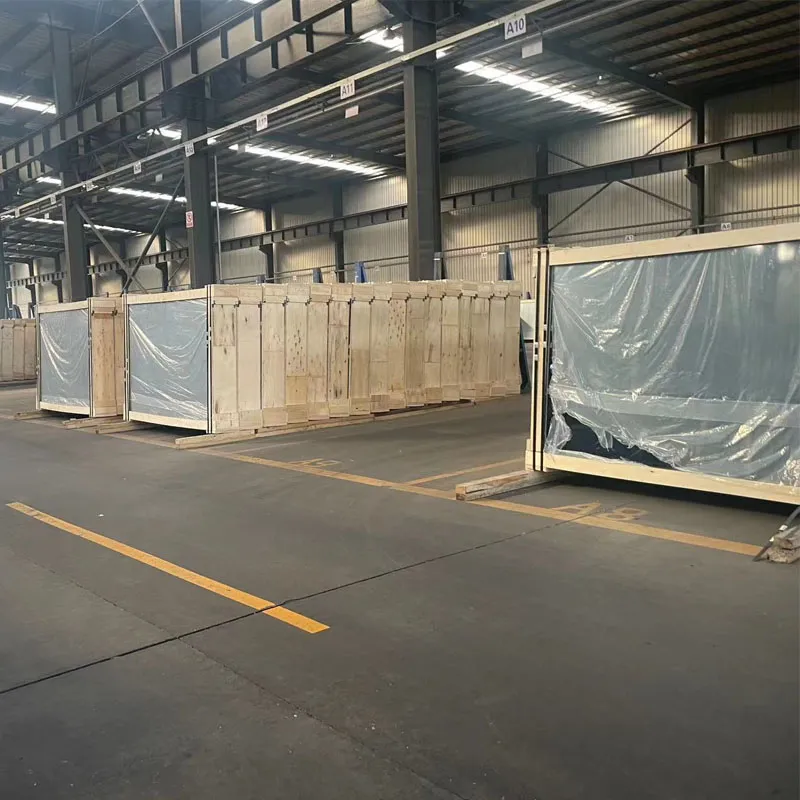The Significance and Evolution of Architectural Glass
Architectural glass is a fundamental material that plays a pivotal role in modern construction and design. It is essential in enhancing the aesthetic appeal of buildings while also contributing to functionality and sustainability. Over the years, the evolution of architectural glass has paved the way for innovative design solutions, shaping the skyline of cities and influencing the way spaces are experienced by their inhabitants.
Historical Context
Historically, glass has been used in architecture since ancient times, with the earliest examples found in Roman and Byzantine structures. However, it was not until the 19th century, with the advent of industrial advancements, that glass began to be produced in large quantities and at a lower cost. The introduction of plate glass made it possible to create larger windows, thus allowing more natural light into buildings and transforming the aesthetic quality of architectural design.
The 20th century saw significant advancements in glass technology, including the development of toughened and laminated glass, which enhanced safety and durability. The use of glass became more widespread, leading to iconic structures such as the Crystal Palace in London and the Seagram Building in New York City. These buildings showcased the versatile nature of glass and its potential as a primary building material.
Contemporary Applications
In contemporary architecture, glass is not just a means to allow light into a space; it has become a feature that defines modern design. Today’s architects utilize glass in a myriad of ways, including as structural elements, facades, and even roofs. The ability to create large, uninterrupted spans with glass allows for open, airy designs that blend indoor and outdoor environments, fostering a connection with nature.
Innovations in glass technology have also led to the development of energy-efficient products. Low-emissivity (Low-E) glass, for example, reflects heat and helps maintain a comfortable temperature within buildings, thereby reducing energy costs. Additionally, smart glass technologies allow for dynamic control of transparency and light transmission, enabling buildings to adapt to varying environmental conditions. This adaptability is particularly beneficial in urban settings where changing weather patterns can create challenges for energy management.
architectural glass
Sustainability in Architectural Glass
Sustainability is a top priority in modern architecture, and glass plays a crucial role in this movement. The glass industry has made significant strides in reducing its carbon footprint through recyclability and the use of eco-friendly manufacturing processes. Recycled glass can be repurposed into new products, reducing waste and conserving natural resources. Moreover, the transparency of glass allows for natural daylight to illuminate interiors, which can significantly reduce reliance on artificial lighting.
Furthermore, innovative designs such as double-skin facades not only enhance energy efficiency but also improve acoustic insulation. These designs utilize two layers of glass separated by an air gap, which creates an insulating barrier that helps regulate indoor temperatures while minimizing external noise pollution.
Architectural Glass in the Future
The future of architectural glass looks promising, with continuous research and development leading to even more advanced materials and applications. As architects strive for greater sustainability and efficiency, we can expect to see the emergence of new coatings that enhance durability, solar control, and self-cleaning properties.
Moreover, integrating glass with other materials, such as metal and ceramics, will likely result in hybrid solutions that combine the best features of each material. The exploration of biomimicry—design inspired by nature—may also yield further innovations in architectural glass, leading to structures that are not only aesthetically stunning but also highly functional and environmentally responsive.
In conclusion, architectural glass has evolved from a simple building component to a central element of modern architectural design. Its ability to combine beauty, functionality, and sustainability marks it as a vital material in the construction of our future spaces. As technology advances, the potential of architectural glass will undoubtedly continue to expand, shaping the urban landscapes of tomorrow.
 Afrikaans
Afrikaans  Albanian
Albanian  Amharic
Amharic  Arabic
Arabic  Armenian
Armenian  Azerbaijani
Azerbaijani  Basque
Basque  Belarusian
Belarusian  Bengali
Bengali  Bosnian
Bosnian  Bulgarian
Bulgarian  Catalan
Catalan  Cebuano
Cebuano  Corsican
Corsican  Croatian
Croatian  Czech
Czech  Danish
Danish  Dutch
Dutch  English
English  Esperanto
Esperanto  Estonian
Estonian  Finnish
Finnish  French
French  Frisian
Frisian  Galician
Galician  Georgian
Georgian  German
German  Greek
Greek  Gujarati
Gujarati  Haitian Creole
Haitian Creole  hausa
hausa  hawaiian
hawaiian  Hebrew
Hebrew  Hindi
Hindi  Miao
Miao  Hungarian
Hungarian  Icelandic
Icelandic  igbo
igbo  Indonesian
Indonesian  irish
irish  Italian
Italian  Japanese
Japanese  Javanese
Javanese  Kannada
Kannada  kazakh
kazakh  Khmer
Khmer  Rwandese
Rwandese  Korean
Korean  Kurdish
Kurdish  Kyrgyz
Kyrgyz  Lao
Lao  Latin
Latin  Latvian
Latvian  Lithuanian
Lithuanian  Luxembourgish
Luxembourgish  Macedonian
Macedonian  Malgashi
Malgashi  Malay
Malay  Malayalam
Malayalam  Maltese
Maltese  Maori
Maori  Marathi
Marathi  Mongolian
Mongolian  Myanmar
Myanmar  Nepali
Nepali  Norwegian
Norwegian  Norwegian
Norwegian  Occitan
Occitan  Pashto
Pashto  Persian
Persian  Polish
Polish  Portuguese
Portuguese  Punjabi
Punjabi  Romanian
Romanian  Russian
Russian  Samoan
Samoan  Scottish Gaelic
Scottish Gaelic  Serbian
Serbian  Sesotho
Sesotho  Shona
Shona  Sindhi
Sindhi  Sinhala
Sinhala  Slovak
Slovak  Slovenian
Slovenian  Somali
Somali  Spanish
Spanish  Sundanese
Sundanese  Swahili
Swahili  Swedish
Swedish  Tagalog
Tagalog  Tajik
Tajik  Tamil
Tamil  Tatar
Tatar  Telugu
Telugu  Thai
Thai  Turkish
Turkish  Turkmen
Turkmen  Ukrainian
Ukrainian  Urdu
Urdu  Uighur
Uighur  Uzbek
Uzbek  Vietnamese
Vietnamese  Welsh
Welsh  Bantu
Bantu  Yiddish
Yiddish  Yoruba
Yoruba  Zulu
Zulu 

